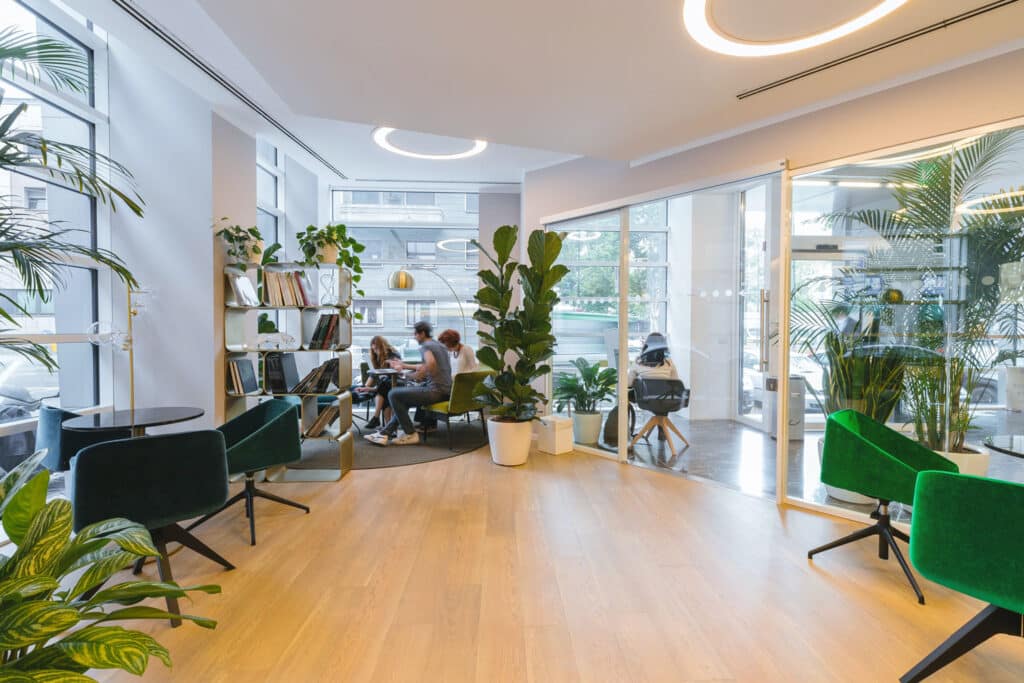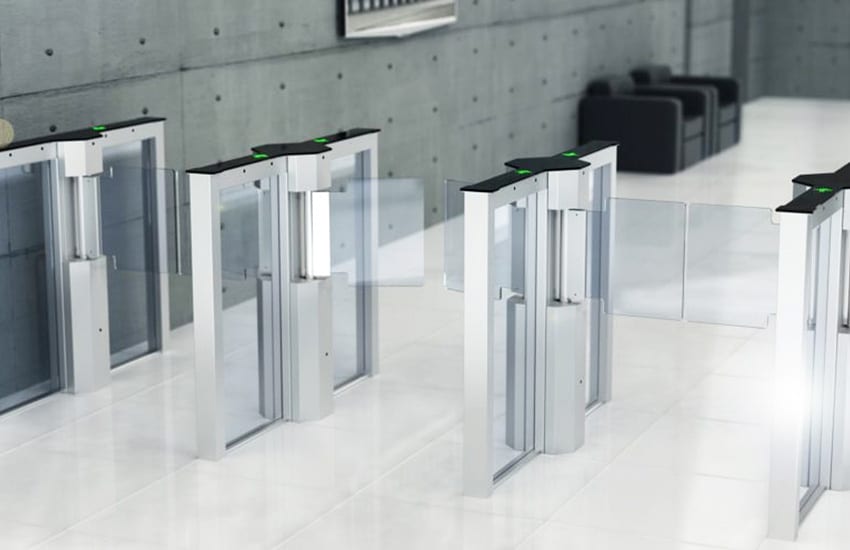09/05/2023
Do you know there’s an assassin in your business? He moves silently between your buildings, in multiple cities and countries. He has access to every floor, in every office. He hides behind your desk, lurks unseen in your conference room, merges effortlessly into your daily workflows. And he does it in plain sight. Most of the time, you won’t even realise he’s there.

He’s energy waste. His mission: to kill your P&L with needless expenses, blunt your competitive edge by switching on infrastructure and equipment when you don’t need it, max out your electricity usage to minimise your margins. Every PC left on overnight, every empty meeting room with the heater on, every server rack that isn’t buzzing with customer data is a weapon in his arsenal. And he’ll use it against you, every day.
Fortunately, it’s possible to foil this evil killer of business value: with Smart Spaces.
Smart Spaces is a catch-all strategy for managing energy consumption in today’s workplace – and it goes far further than “switching the lights off”. It’s a digital strategy using intelligence sensors and software to make sure your buildings and workspaces are using only the energy they need to serve your people … and no more. Making it work for you is a key focus of Getronics.
In today’s article, you’ll learn how Smart Spaces work the Getronics way: from energy efficiency to energy automation, and sustainable buildings to smart buildings. Let’s flip the switch and get started.
Getting the Big Picture: Smart Spaces and your ESG goals
With energy prices high and businesses not subject to the caps many countries place on consumer prices, energy use is an eye-popping accounting item. But let’s zoom out for a moment.
Ultimately, the energy you use is the source of the greenhouse gases (GHGs) you emit – so thinking about your Environment, Social, and Governance ambitions is a great place to start moving towards carbon neutrality, or “Net Zero”.
The IPCC (Intergovernmental Panel on Climate Change) divides a company’s emissions into three “scopes”. Scope 3 covers the GHGs you don’t produce inhouse, but which are part of your value chain: from your suppliers, subcontractors, and end-of-lifecycle product disposal. Scope 2 emissions are from energy production: even if your vehicles are electric, the electricity may be produced in a coal-burning plant. While Scope 1 are the emissions you have most control over: those created by energy use in your buildings and infrastructure.
Scopes 2 and 3 are outside the scope of this article. But Scope 1 emissions are fully within your control – and they’re the target of a Smart Spaces strategy.
By caring about energy management (and energy reduction!) companies can skyrocket their sustainability while reducing cost and improving people’s experience of the space and services.
Mattia Asti, Getronics Smart Spaces team
Seeing your energy use in terms of emissions makes sense because reducing emissions leads to lower energy bills and smarter ways of working – so a focus on ESG responsibilities has a positive ROI impact too. Greater lighting and HVAC efficiencies leads to cost savings, but contribute to sustainability too.
This is the dream of Smart Spaces: to make business better by contributing to the planet’s welfare. So as a first step towards fighting the assassin, get this Big Picture idea in your head first.
Seeing the Big Picture: gathering data into an integrated platform
But how do you get your hands on the right data, so you know where you stand? The traditional approach to managing energy is with a Building Management System, or BMS.
It’s a control system for monitoring and managing the mechanical, electrical, and electromechanical services in a facility. Such services include power, heating, ventilation, air-conditioning, physical access control, pumping stations, elevators and lights.
BMSs work great if all control systems are bought and installed in one go as a single solution. But in reality, most companies buy systems from different vendors … at different sites … at different times. Which makes integration difficult. There’ll be a system for controlling lights, another app for heating, another for counting heads in and out of the keycard access door – none of them talking to each other. In terms of gathering and using data effectively, it’s not so much a “single pane of glass” as a thousand shattered fragments.
Making sense of the overall picture needs an integrated digital platform – and that’s the first goal of Getronics. By connecting different systems, sensors and devices as a secure virtual network you can bring all these different datasets together, to form a single view of your business – letting you see how each building behaves over time.
Integrated Smart Spaces means getting visibility of all systems in one single place, from HVAC to lighting, to access control and occupancy sensors, to CO2 and humidity sensors, and more. And not only in one building, but across the whole real estate portfolio, even globally, enhanced by powerful dashboards for monitoring and comparison to sustainability certification standards or your own ESG targets.
Mattia Asti, Getronics Smart Spaces team
This single view of the truth is how you build understanding. Imagine being able to compare figures for electricity, HVAC, and patterns of movement across locations, seeing the effects of small automated actions that add up to big results. (Like turning off a room’s lighting and heating when it’s booked but nobody turned up – with the data coming from occupancy sensors – while a chatbot informs the user who booked to drive behavioural change.) All these small actions have an effect on overall building efficiency and ESG goals. When you’re empowered by data, the assassin has no place to hide.
Using the Big Picture: automating improvements to make buildings fit for the future
When all your systems are connected together, giving you a single view of the truth across the organization, you’ll be ready for the endgame of Smart Spaces: automation. Using those findings and insights to transform the way your business uses energy. This is where the everyday benefits of a Smart Spaces approach turn into drivers of creativity and innovation.
Wherever you see a repeated pattern of energy waste, it’s ripe for automating. If the third floor always goes home at 17:30 but the ground floor works late, whole floors can be powered down hours earlier with no effect on productivity. Or if people turn on the heat in the morning and the air con in the afternoon, automating this change will stop them overcompensating, saving money. Or switching off lights if everybody goes to lunch at the same time. These are a few simple examples – but a large business will have thousands of them.
Deploying an integration platform makes your buildings and business futureproof, able to connect any innovative new technology entering the market ready to deploy as a new module and weave into your existing business automation workflows.
Mattia Asti, Getronics Smart Spaces team
Technology doesn’t stand still – and as you roll out a Smart Spaces strategy you’ll want to bring more and more data and devices into your platform. Perhaps you’ll add a wind turbine to the office park, or new windows as solar collectors, or switch to renewable-only energy sources. And the data they add will enable even better decision-making.
Leveraging the Big Picture: buildings management as profit driver
The ideal scenario of Smart Spaces is to see buildings and energy management not as cost centres, but as sources of competitive advantage.
By backing up your ESG goals with hard data, you can satisfy the most stringent government regulations and avoid noncompliance fines. By demonstrating solid environmental outcomes, you can prove your green credentials. By being a good corporate citizen, you can build your brand among customers and consumers. All happening in concert with lower electricity costs, more efficient buildings, more enjoyable occupant’s experience, greater awareness of best practice among your employees. There’s simply no downside.
And it goes further. When you see costs falling in one building thanks to a new policy, you can apply the same policies across your entire property portfolio, whether that’s hot-desking office space, meeting rooms rejigged as video booths, or entire corridors and common spaces reworked and repurposed. All administered from a single platform.
And by incorporating other tools into your platform – like AI – you can plan and predict future scenarios too, exploring What-Ifs for new layouts and spaces before rolling them out in the real world. True Smart Spaces are about optimization of processes, not just cost savings per square metre.
Which makes them a tool for innovative thinking: new configurations, new workflows, new business practices that take you into tomorrow.
In other words, the assassins have left the building.
Smart Spaces lets you manage buildings, businesses, and the planet
Smart Spaces have long been our obsession at Getronics – and we’ve built them for an assortment of customers, with the Getronics Integration Hub.
We care passionately about intelligent buildings, integrated platforms, and our customers’ businesses. But we care just as much about our planet. Which is why we don’t see business success, energy use, and ESG objectives as separate, but as all part of the same whole.
Why not book a call to see Smart Spaces in action? Contact us.





